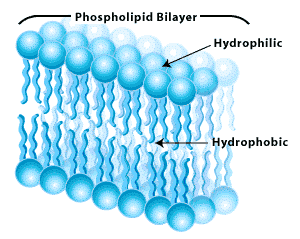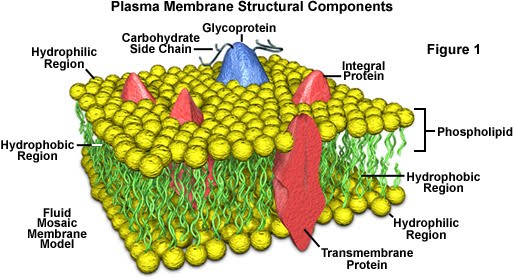The plasma membrane
Armed with this knowledge of lipids, as well as carbohydrates and proteins, we can now explore the structure of plasma membranes, specifically in the context of the fluid-mosaic model. Phospholipids have a hydrophilic (water loving) head, and hydrophobic (water repelling) tails. This results in the formation of a phospholipid bilayer (double layer), which forms the basis for the plasma membrane.

The name of fluid-mosaic model comes from:
Fluid = the arrangement of proteins contained in the membrane is always changing
Mosaic = the proteins present are spread around in a mosaic-like fashion.

It’s pretty isn’t it? The proteins are crucial to cell communication as well as the selective permeability of the membrane. The glycoprotein (sugars/carbohydrates attached to a protein) side chains act as…
